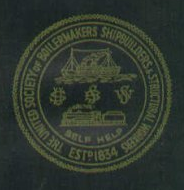Related Research Articles
In British politics, an affiliated trade union is one that is linked to the Labour Party. The party was created by the trade unions and socialist societies in 1900 as the Labour Representation Committee and the unions have retained close institutional links with it.

The Transport and General Workers' Union was one of the largest general trade unions in the United Kingdom and Ireland – where it was known as the Amalgamated Transport and General Workers' Union (ATGWU) to differentiate itself from the Irish Transport and General Workers' Union – with 900,000 members. It was founded in 1922 and Ernest Bevin served as its first general secretary.
The Dock, Wharf, Riverside and General Labourers Union (DWRGLU), often known as the Dockers' Union, was a British trade union representing dock workers in the United Kingdom.

The Union of Construction, Allied Trades and Technicians (UCATT) was a British and Irish trade union, operating in the construction industry. It was founded in 1971, and merged into Unite on 1 January 2017.

The Modern Records Centre (MRC) is the specialist archive service of the University of Warwick in Coventry, England, located adjacent to the Central Campus Library. It was established in October 1973 and holds the world's largest archive collection on British industrial relations, as well as archives relating to many other aspects of British social, political and economic history.

The Amalgamated Engineering Union (AEU) was a major British trade union. It merged with the Electrical, Electronic, Telecommunications and Plumbing Union to form the Amalgamated Engineering and Electrical Union in 1992.
The United Order of General Labourers was a trade union representing labourers, mostly in the construction industry, in the United Kingdom.
The Altogether Builders' Labourers and Constructional Workers' Society was a trade union representing labourers in the construction industry in the United Kingdom.
The Public Works and Constructional Operatives' Union was a trade union representing labourers in the United Kingdom.
The National Union of General Workers (NUGW) was an early general union in the United Kingdom, the most important general union of its era.
The National Amalgamated Union of Labour (NAUL) was a general union in the United Kingdom.

The Amalgamated Society of Boilermakers, Shipwrights, Blacksmiths and Structural Workers (ASB) was a trade union in the United Kingdom. Many of its members worked in shipbuilding, in which industry it was the leading trade union, while over time it also developed strength in engineering and construction.

The Amalgamated Union of Building Trade Workers (AUBTW) was a British trade union.
Sir Richard Coppock was a British trade unionist and politician.
The London builders' strike of 1859 was a strike and resulting lock out of building trade workers across London. The action did not result in any changes to working conditions, but it led to the formation of new, national trade unions in the United Kingdom.
The National Federation of Building Trades Operatives (NFBTO) was a trade union federation in the United Kingdom, consisting of unions with members in construction and related industries.

William Leonard Hall was a British trade union leader, journalist, and socialist activist, who held prominent positions in the Independent Labour Party.
W. Richard Davies was a Welsh trade unionist and political activist. The president of one union, and general secretary of another, he also served as a city councillor and contested numerous Parliamentary elections.